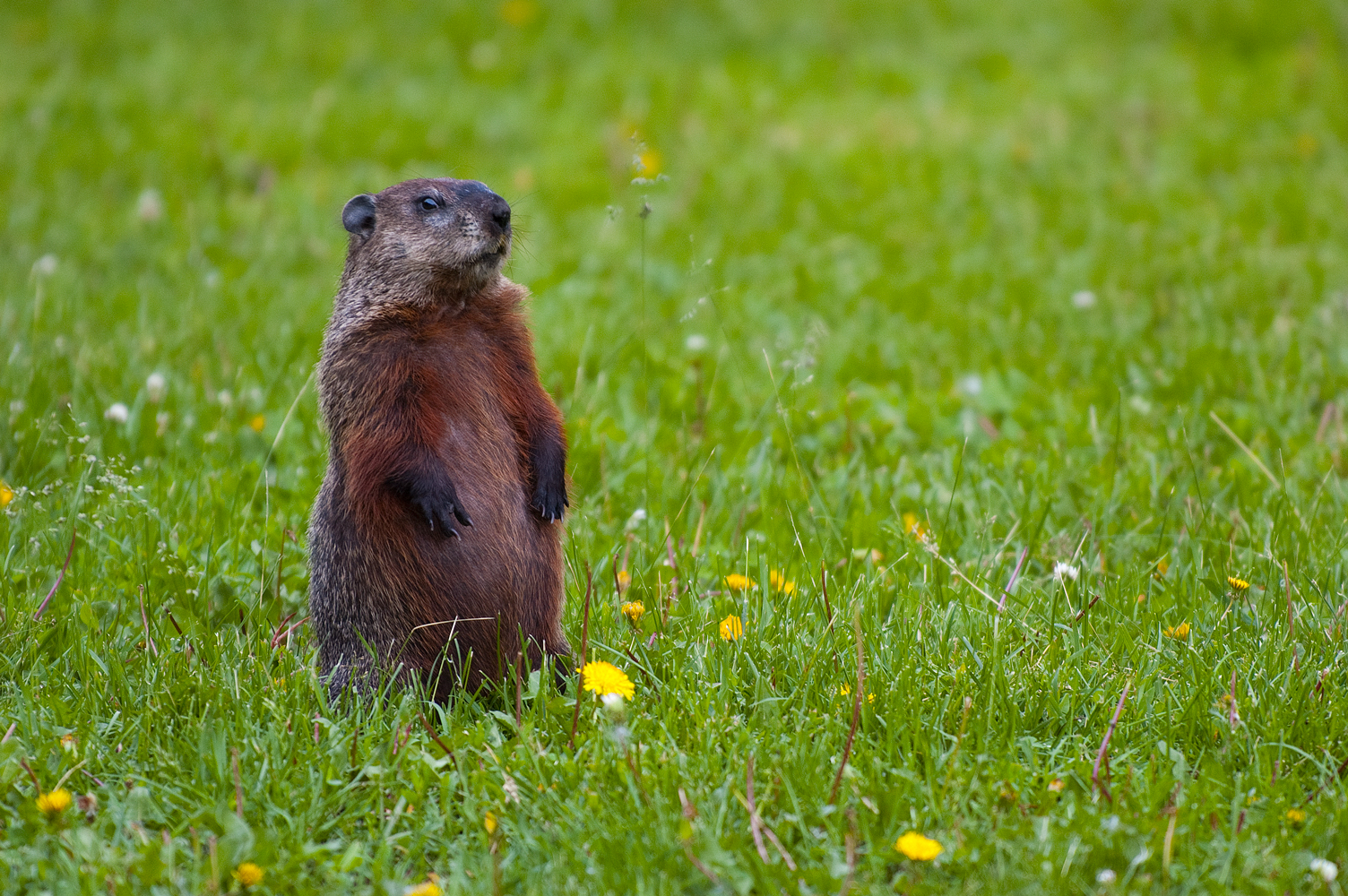
Moonack in the sun (courtesy of Wikimedia)
On what we could have called Otchig Day, February 2, legend says the gopher rat will emerge from its underground burrow to look for its shadow. In case of shadow, this pasture pup will retreat underground, and we’ll have six more weeks of winter. But a cloudy day will encourage the johnny chuck to stay above ground, and winter will be over.
Most of us know this subterranean dweller by the widely used names groundhog and woodchuck. The recently published, newly online Dictionary of American Regional English labels woodchuck “chiefly North and Midland,” and groundhog “widespread but especially Midland.” Punxsutawney in southwestern Pennsylvania is in the Midland region, where both terms are well known. Why Phil chose to be a groundhog rather than woodchuck is a matter I’ll leave to the historians.
People in Appalachia often call it a whistle pig because, well, it somewhat resembles a pig, and it whistles, as you can hear on this YouTube video.
But those three names are only one part of the story. Thanks to the Dictionary of American Regional English, we know that the mud heaver has many more names. There we learn that the animal known to naturalists as Marmota monax has been designated by dozens of names since English-speaking denizens came to the shores of North America centuries ago. As names for this creature, DARE finds isolated instances of:
—gopher rat in Tennessee
—pasture pup in the East
—johnny chuck in Connecticut
—mud heaver in New Hampshire
—weather hog in Georgia and Tennessee
—hog in Pennsylvania, Kentucky, Virginia
—gopher in Colorado, New Jersey, South Carolina
Variety like this is perfectly normal for a language. There is a handful (at most) of widely known variants of a given item, but then many handfuls of little-used names. It’s because language isn’t hard wired but has to be learned, and because there aren’t naturalists watching each and every bull-beggar (Massachusetts), groundpig (Kentucky), or groundswine (Ohio) to make sure everyone agrees on what it is and what it should be called. You see an animal and attach a name you’ve heard, or perhaps make up one yourself. But to communicate with others, most of the time you are likely to use a well-known term.
Some of the names for the moonack (Maryland, Virginia) are obvious enough in their origins, groundhog in particular. The animal behaves like a hog and lives in the ground. Likewise mud heaver and weather hog.
But what about woodchuck? Well, in 1781 the author of a history of Connecticut explained, “The Woodchuck . . , when eating, makes a noise like a hog, whence he is named Woodchuck, or Chuck of the Wood.” An explanation that itself needs explanation. And it’s wrong.
No, since then the authorities have agreed that woodchuck comes from Ojibwa otchig or odjik, or Cree otchek. To complicate matters, that was originally the name of a different animal, the weasel-like above-ground forest dweller tree fox, aka pekan or fisher.
In any case, here’s hoping the ground chuck (New Jersey, Wisconsin) finds shade on February 2.
Correction (1/23/2014, 12:40 p.m.): Our blogging software mysteriously ate the first paragraph of this post. It has been restored and updated with the missing introduction.